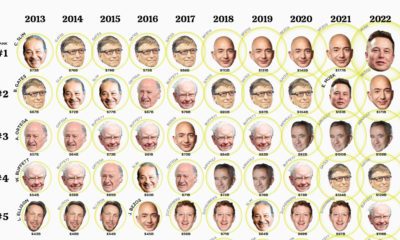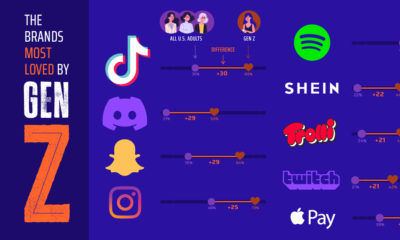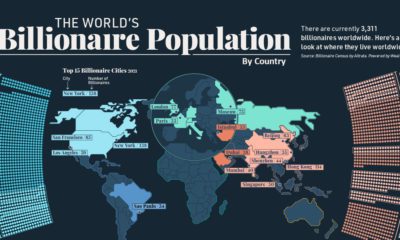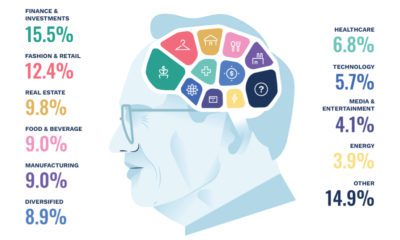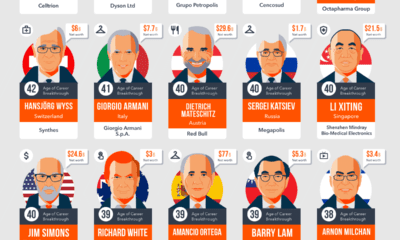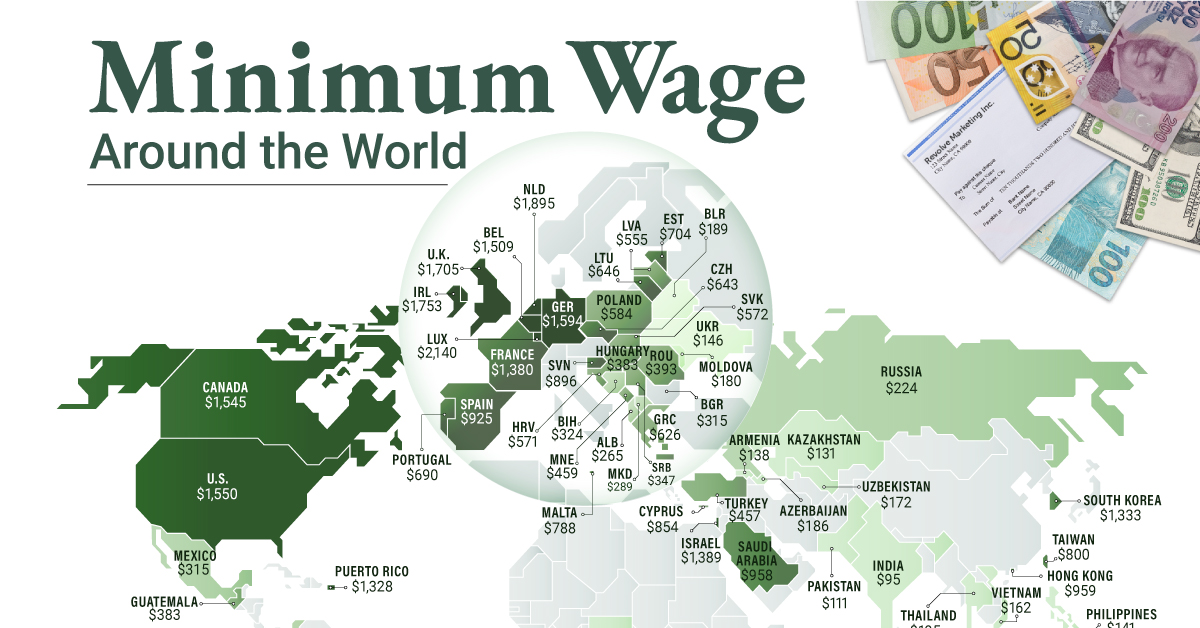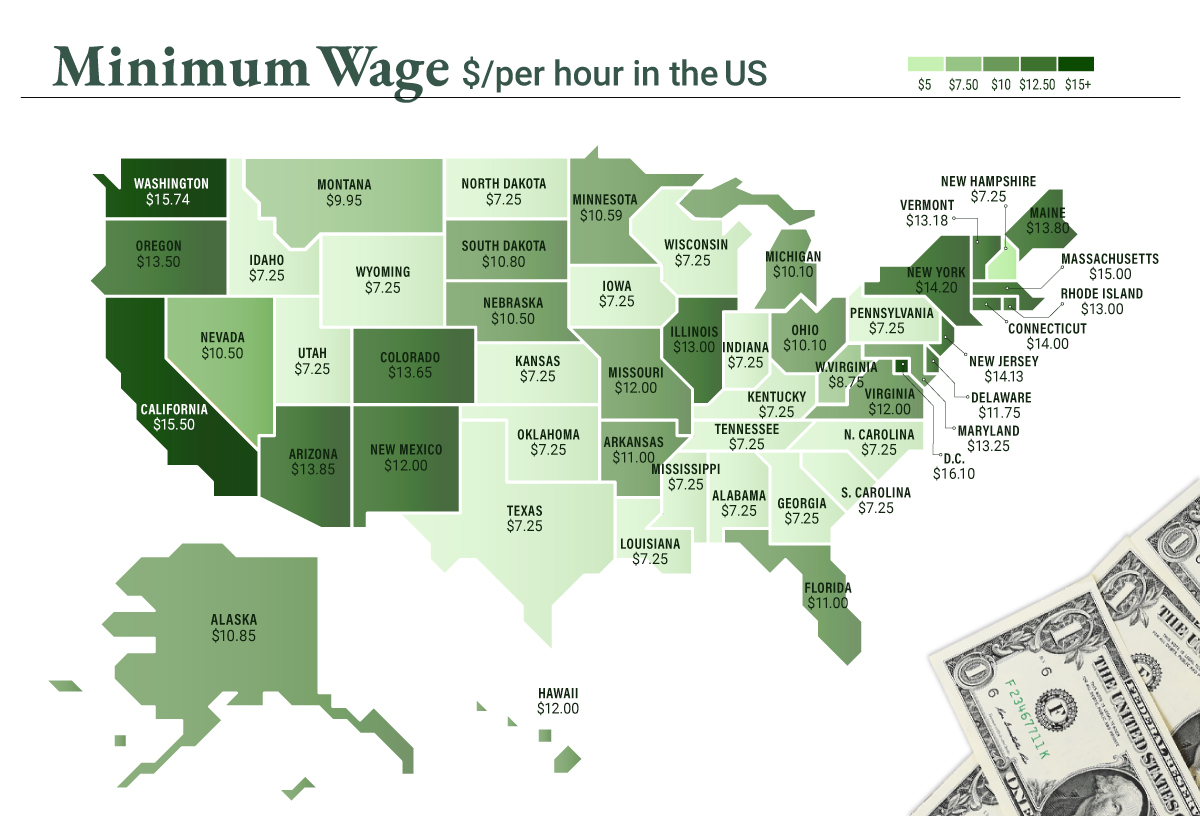Of these ultra wealthy individuals, just over 100 are millennials, born between the years 1981 and 1996. This young generation represents around 3.8% of all billionaires on a global basis with a combined net worth of $573.1 billion. This visualization, using data from Forbes, ranks the richest 25 millennial billionaires and details their source of wealth, total net worth, nationality, and age. Note: Forbes categorized billionaires by current age (2021). For those slightly over or under the age range of Millennials, meaning those who are currently 24 or 40 years old (i.e. they could have been born in either 1996/1997 or 1980/1981), if their birth year could not be accurately determined, they were left out of this ranking.
Who are the Millennial Billionaires?
The oldest millennials will be turning 40 in 2021, while the youngest are just turning 25. This means that millennial billionaires are generally the youngest billionaires in the world, save two Gen Zers: Wang Zelong of China, 24, and Kevin David Lehmann of Germany, 18. The U.S. is home to the most millennial billionaires at 33 total, with China coming in second at 23—most other countries fall far behind. In the U.S., millennial billionaires are often associated with notable tech companies like Snapchat, Airbnb, and Facebook. Others are heirs of massive family fortunes like Lukas Walton—grandson of Sam Walton, the founder of Walmart and the original head of America’s richest family. In China, some millennial billionaires really stand out, like Relx founder, Kate Wang. The 39-year-old started her e-cigarette and vape company only three years ago, at age 36, and is expected to soon be vying for the title of richest woman in China.
Billionaire Growth
Overall, billionaires were up $8 trillion in combined net worth compared to 2020 with around 493 new people added to the list in 2021. In fact, 86% of all billionaires are richer than a year ago. But let’s look at how wealth changed for the millennials in the billionaires club. Here’s a look at the difference in net worth from 2020 to 2021 for the top five richest millennials:
Mark Zuckerberg: +$35 Billion Zhang Yiming: +$19.4 Billion Yang Huiyan: +$9.3 Billion Dustin Moskovitz: +$8.5 Billion Su Hua: +$14.9 Billion
For each of the top 25 millennial billionaires, net worth either increased or was unchanged (or they were new to the title of billionaire). This is true for all except one person—Lukas Walton, whose net worth decreased by almost $3 billion from 2020 to 2021.
The Average Millennial
While there are around 106 millennial billionaires worldwide, their combined net worth is only a fraction of total billionaire wealth. So how much economic power and influence does this generation really hold? When looking at the average American millennial’s wealth, the Generational Power Index has determined that this young generation only holds 9.6% of economic power in the U.S. Here’s a quick look at millennial wealth metrics in the U.S.:
Millennials only make up 7% of American business leaders They own $73 billion in equities and mutual fund shares They represent 13% of small business leaders They make up 7% of American billionaire wealth
Globally, there are an estimated 1.8 billion millennials. Among that cohort, there are just over 100 people worth billions—and given that many are still in the early part of their careers, there is likely to be many millennial billionaires yet to come. on To see how the minimum wage differs around the world, we’ve visualized data from Picodi, which includes values for 67 countries as of January 2023.
Monthly Minimum Wage, by Country
The following table includes all of the data used in this infographic. Each value represents the monthly minimum wage a full-time worker would receive in each country. Picodi states that these figures are net of taxes and have been converted to USD. Generally speaking, developed countries have a higher cost of living, and thus require a higher minimum wage. Two outliers in this dataset are Argentina and Turkey, which have increased their minimum wages by 100% or more from January 2022 levels. Turkey is suffering from an ongoing currency crisis, with the lira losing over 40% of its value in 2021. Prices of basic goods have increased considerably as the Turkish lira continues to plummet. In fact, a 2022 survey found that 70% of people in Turkey were struggling to pay for food. Argentina, South America’s second-biggest economy, is also suffering from very high inflation. In response, the country announced three minimum wage increases throughout 2022.
Minimum Wage in the U.S.
Within the U.S., minimum wage varies significantly by state. We’ve visualized each state’s basic minimum rate (hourly) using January 2023 data from the U.S. Department of Labor.
2023-03-17 Update: This map was updated to fix several incorrect values. We apologize for any confusion this may have caused. America’s federal minimum wage has remained unchanged since 2009 at $7.25 per hour. Each state is allowed to set their own minimum wage, as long as it’s higher than the federal minimum. In states that do not set their own minimum, the federal minimum applies. If we assume someone works 40 hours a week, the federal minimum wage of $7.25 translates to an annual figure of just $15,080 before taxes. California’s minimum wage of $15.50 translates to $32,240 before taxes. For further perspective, check out our 2022 infographic on the salary needed to buy a home across 50 U.S. cities.
